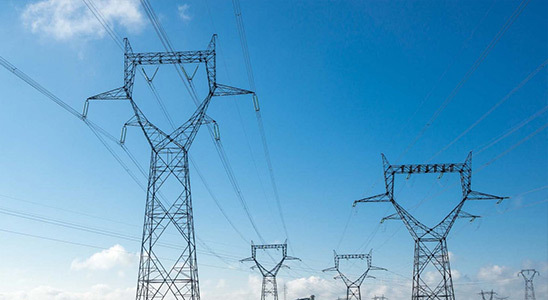What points should be noted during the use of a transformer?
During the use of transformers, the following points should be noted: they should be installed in well-ventilated, dry places free from corrosive gases and dust. Avoid installation in humid, high-temperature, flammable, or explosive environments to prevent damage to the transformer or the occurrence of safety accidents due to environmental factors.
During the use of transformers, the following points should be noted:
1. Installation and Debugging Stage
1. Selection of Installation Location
It should be installed in a well-ventilated, dry place without corrosive gases and dust. Avoid installing in humid, high-temperature, flammable, or explosive environments to prevent damage to the transformer or safety accidents caused by environmental factors.
Ensure that the installation site has enough space for the transformer’s heat dissipation and maintenance operations. At the same time, consider the safe distance between the transformer and surrounding buildings and equipment to prevent affecting other facilities in case of fire or electrical accidents.
2. Firm Foundation
The foundation of the transformer must be firm and reliable, capable of bearing the weight of the transformer and the vibrations during operation. An unstable foundation may cause the transformer to tilt or shift, affecting its normal operation and even damaging the transformer.
Before installing the transformer, the foundation should be inspected and accepted to ensure it meets design requirements and installation standards.
3. Correct Wiring
Wiring should be done strictly according to the transformer’s wiring diagram to ensure that the connections on both the primary and secondary sides are correct. Incorrect wiring may cause the transformer to malfunction or even damage the transformer or other electrical equipment.
When wiring, pay attention to the tightness of the terminals to avoid loosening, which can lead to poor contact and heating issues. At the same time, ensure that the insulation performance of the wiring is good to prevent leakage and short circuit accidents.
4. Debugging and Testing
Before the transformer is put into use, debugging and testing must be carried out. This includes measuring the transformer’s insulation resistance, DC resistance, transformation ratio, and checking whether the appearance, wiring, and cooling system of the transformer are normal.
During the debugging process, follow the operating procedures step by step to avoid equipment damage due to improper operation. At the same time, record and analyze the debugging results to ensure that the transformer meets usage requirements.
2. Operation Stage
1. Load Control
The load on the transformer should be within its rated capacity to avoid long-term overload operation. Overloading can cause the transformer’s temperature to rise, accelerate insulation aging, reduce the transformer’s lifespan, and may even lead to fire and other safety accidents.
Distribute the transformer’s load reasonably based on actual load conditions to avoid one transformer being overloaded while others are underloaded. At the same time, monitor the load changes of the transformer and adjust the load distribution in a timely manner.
2. Temperature Monitoring
The transformer generates heat during operation, causing the temperature to rise. Therefore, it is necessary to monitor the temperature of the transformer to ensure it remains within the allowable range. Typically, the temperature of the transformer can be measured using thermometers, temperature sensors, and other devices.
If the transformer’s temperature is too high, measures should be taken promptly to cool it down, such as increasing ventilation or reducing the load. If the temperature continues to rise, the transformer should be stopped immediately for inspection and maintenance.
3. Voltage Adjustment
The output voltage of the transformer should be maintained within the specified range to ensure the normal operation of the connected electrical equipment. If the voltage is too high or too low, it may damage the electrical equipment and affect its performance and lifespan.
The output voltage can be changed by adjusting the transformer’s tap switch. When adjusting the voltage, follow the operating procedures to avoid damaging the transformer due to improper operation.
4. Patrol Inspection
Regularly patrol and inspect the transformer to promptly identify and address potential issues. The inspection should include checking whether the transformer’s appearance, sound, temperature, oil level, etc., are normal, and whether there are any oil leaks or discharges.
During the patrol inspection, pay attention to safety and avoid approaching high-voltage equipment. At the same time, keep records and address any identified issues promptly.
3. Maintenance and Care Stage
1. Regular Maintenance
Perform regular maintenance on the transformer at specified intervals, including cleaning the transformer’s shell, radiator, insulators, and other components, and checking the transformer’s insulation and sealing performance.
Regularly replace the transformer’s insulating oil to ensure the quality of the insulating oil meets the requirements. The insulating oil plays a role in insulation, heat dissipation, and arc extinguishing during the transformer’s operation, and its quality directly affects the transformer’s performance and lifespan.
2. Fault Handling
When a fault occurs in the transformer, stop operation immediately for inspection and maintenance. Fault handling should follow the principle of starting with simple issues and moving to complex ones, checking external issues before internal ones.
For some common faults, such as oil leaks, overheating, and discharges, preliminary judgments can be made based on the fault phenomena, and corresponding measures can be taken. If the fault is more serious, contact professional maintenance personnel for handling.
3. Safety Protection
During the maintenance and care of the transformer, attention should be paid to safety protection. Operators should wear necessary protective gear, such as insulating gloves, insulating shoes, and safety helmets.
More news







